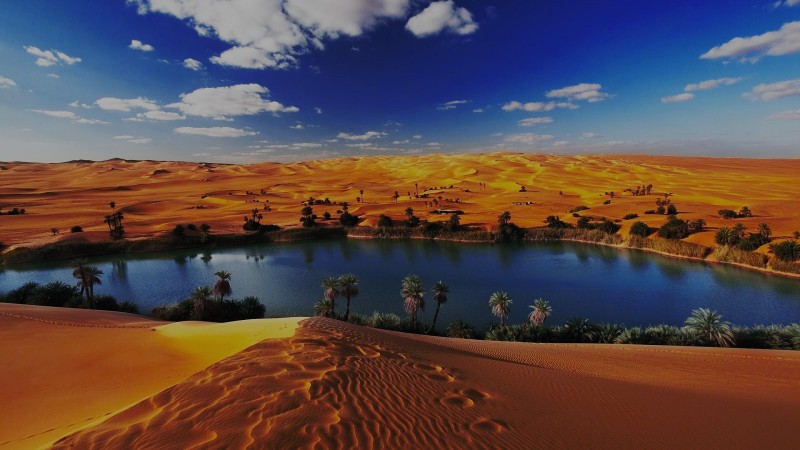Welcome to a journey through the enchanting landscapes and rich cultural heritage of Fayoum Oasis, a hidden gem nestled in the heart of Egypt. Fayoum, also known as the “Land of Dreams,” beckons with its captivating blend of natural wonders, archaeological treasures, and the timeless charm of its people.
Situated just a short drive from Cairo, Fayoum Oasis is a sprawling oasis that unfolds like a tapestry of vibrant colors and diverse ecosystems. From the lush greenery of its agricultural fields to the tranquil waters of Lake Qarun, this oasis is a haven for those seeking a respite from the bustling city life.
Steeped in history, Fayoum is a cradle of ancient civilizations, with evidence of human habitation dating back to prehistoric times. The region boasts a wealth of archaeological sites, including the renowned Hawara Pyramid and the captivating ruins of ancient cities like Karanis. As you explore these remnants of the past, you’ll find yourself transported to a bygone era, where the whispers of history echo through the windswept dunes.
Beyond its archaeological significance, Fayoum is a haven for nature enthusiasts. The oasis is home to a diverse array of flora and fauna, creating a unique ecosystem that supports both migratory birds and endemic species. Birdwatchers will be delighted by the sight of flocks gracefully navigating the skies, while the serene lakes and lush landscapes provide a perfect backdrop for relaxation.
In this blog, we invite you to join us on a virtual expedition through the wonders of Fayoum Oasis. From the ancient mysteries shrouded in its archaeological sites to the breathtaking beauty of its natural landscapes, we will uncover the treasures that make Fayoum a destination worth exploring. So, fasten your seatbelts and get ready to embark on a journey through the captivating allure of Fayoum Oasis.
⬇️⬇️GET 25% OFF OF YOUR TRIP TO EGYPT 2024/2025 ⬇️⬇️
What is AL Fayoum Oasis Egypt known for?

Al Fayoum Oasis is a multifaceted destination, drawing visitors with its rich tapestry of history, archaeology, and natural beauty. Its fertile lands have sustained agriculture since ancient times, contributing to the region’s significance.
The iconic Lake Qarun, archaeological treasures like the Hawara Pyramid and Medinet Madi Temple, and the unique water wheels add to its allure. Wadi El-Rayan showcases the oasis’s natural splendor, while the traditional crafts in villages like Tunis Village highlight the enduring cultural heritage. With a blend of ancient wonders and modern development, Al Fayoum invites exploration, offering a captivating glimpse into Egypt’s diverse past and present.
Al Fayoum Oasis location “Cairo to Fayoum”
Al Fayoum Oasis is located in the Fayoum Governorate of Egypt. It is about 100 kilometers (62 miles) southwest of Cairo, the capital city of Egypt. The oasis is a depression in the desert and is known for its agricultural activities, including farming and fishing. The city of Fayoum, which serves as the governorate’s capital, is the region’s main urban center. The Al Fayoum Oasis is known for its natural beauty, archaeological sites, and historical significance.
Between 1270 and 1700 km2 of extension, It is 130 km southwest of Cairo, 8 Days Cairo, Alexandria & Fayoum – Group Tours to Egypt

The History of the Fayoum

The history of the Fayoum region is rich and dates back to ancient times. The area has been inhabited since prehistoric periods, and its history is closely tied to the development of the Nile Valley civilization. Here is an overview of the historical timeline of the Fayoum:
- Prehistoric Period: The Fayoum Oasis has evidence of human habitation dating back to the prehistoric era. Archaeological findings suggest that it was home to early communities engaged in hunting and gathering.
- Ancient Egypt: During the Pharaonic era, the Fayoum Oasis became integral to ancient Egypt. The region served various purposes, including agricultural development, as it was an ideal location for farming due to the presence of a natural depression that allowed for the controlled irrigation of crops.
- Middle Kingdom (c. 2055–1650 BCE): The Middle Kingdom of Egypt saw the expansion of agricultural activities in the Fayoum with the construction of canals and irrigation systems. The pharaohs of this period developed the region as a productive and prosperous agricultural center.
- Greco-Roman Period: With the conquest of Egypt by Alexander the Great and the subsequent rule of the Ptolemaic and Roman dynasties, the Fayoum continued to be an important agricultural area. The Greeks and Romans contributed to constructing new settlements, infrastructure, and temples in the region.
- Early Christian Period: The Fayoum was important during the early Christian period. Christian monastic communities were established, and the region became a center for Christian activities.
- Islamic Period: After the Arab conquest of Egypt in the 7th century, the Fayoum remained significant in Islamic times. The area experienced economic development and cultural influences from various Islamic dynasties.
- Ottoman and Modern Periods: The Ottoman Empire controlled Egypt from the 16th century until the 19th century. During the modern period, the Fayoum became an important agricultural region. In the 20th and 21st centuries, the area has seen population growth and development, with ongoing efforts to balance modernization with preserving its historical and natural heritage.
Know more about 8 Days Cairo, Alexandria & Fayoum -Trip to Egypt from Philippines
Best places to visit in AL Fayoum Oasis Egypt

Al Fayoum Oasis in Egypt offers a variety of attractions, combining natural beauty, historical sites, and cultural experiences. Here are some of the best places to visit in Al Fayoum:
- Lake Qarun (Birket Qarun): This is the largest lake in the Fayoum Oasis, known for its picturesque views. Visitors can enjoy birdwatching, boat rides, and picnics along the shores of the lake.
- Wadi El-Rayan: Wadi El-Rayan is a protected area featuring two connected lakes, artificial waterfalls, and stunning landscapes. It is a great spot for nature lovers and those seeking outdoor activities.
- Karun Palace (Qasr Qarun): Located on the northern shore of Lake Qarun, Karun Palace is an ancient Greco-Roman archaeological site. It includes the temple and palace remains, providing insights into the region’s history.
- Hawara Pyramid (Labyrinth of Hawara): The Pyramid of Amenemhat III at Hawara is a significant archaeological site. Although the pyramid is mostly in ruins, it is associated with the famous Labyrinth mentioned by ancient historians.
- Water Wheels (Sakieh): The traditional water wheels of Al Fayoum, known as Sakieh or Norias, are still in use for irrigation. These wheels are iconic to the region and provide a glimpse into ancient farming practices.
- Medinet Madi Temple: The Medinet Madi Temple is a Greco-Roman temple dedicated to the crocodile god Sobek. It features well-preserved columns and reliefs, and it’s an interesting archaeological site.
- Qasr Al-Sagha Temple: This ancient temple, also known as the Temple of Ptolemy VIII, is dedicated to the god Sobek and is another example of the rich archaeological heritage of Al Fayoum.
- Qasr Al-Farafra (Al-Farafra Temple): This temple is dedicated to the god Sobek and is located near the village of Al-Farafra. It is a well-preserved structure with intricate carvings and hieroglyphs.
- Kom Aushim (Ancient Karanis): This archaeological site showcases the remains of the ancient city of Karanis, including temples, houses, and a bathhouse. It provides a glimpse into daily life during the Roman period.
- Tunis Village: Tunis Village is known for its pottery workshops and traditional crafts. Visitors can explore the local market, interact with artisans, and purchase handmade products.
The best time to visit Fayoum
The best time to visit Al Fayoum Oasis in Egypt is winter, specifically from late October to early April. During this period, the weather is more moderate and pleasant, making it ideal for outdoor activities and exploring the region’s attractions. Here are some details about the seasons:
Winter (Late October to Early April): This is considered the high tourist season. The temperatures during winter are relatively cooler, with daytime temperatures ranging from comfortable to warm. It’s a great time for exploring archaeological sites, enjoying outdoor activities, and taking in the natural beauty of the oasis without the extreme heat of the summer months.
Spring (Late March to May): Spring is also a good time to visit, as temperatures are still mild. The landscape becomes more vibrant with blooming flowers and pleasant weather. Spring offers a good balance between comfortable temperatures and fewer crowds compared to the peak winter months.
Summer (Late May to September): Summer in Al Fayoum is characterized by high temperatures, often exceeding 40°C (104°F) or more. The summer months, particularly July and August, can be extremely hot, making outdoor activities uncomfortable. Due to the scorching heat, it’s not the most recommended time for tourism.
Visiting during the winter or spring months allows you to explore the archaeological sites, enjoy the natural attractions, and partake in outdoor activities more comfortably. It’s advisable to check the specific weather conditions and any local events or festivals that may be taking place during your planned visit. Remember that the climate can vary, and temperatures might be more moderate in the oasis compared to other parts of Egypt.
Fayoum Oasis Tour
Fayoum is a hidden destination in Egypt, if you are in Cairo, do not miss this opportunity to explore this city. Check out our Egypt travel packages or Nile cruise to choose your favorite destinations in Egypt.









